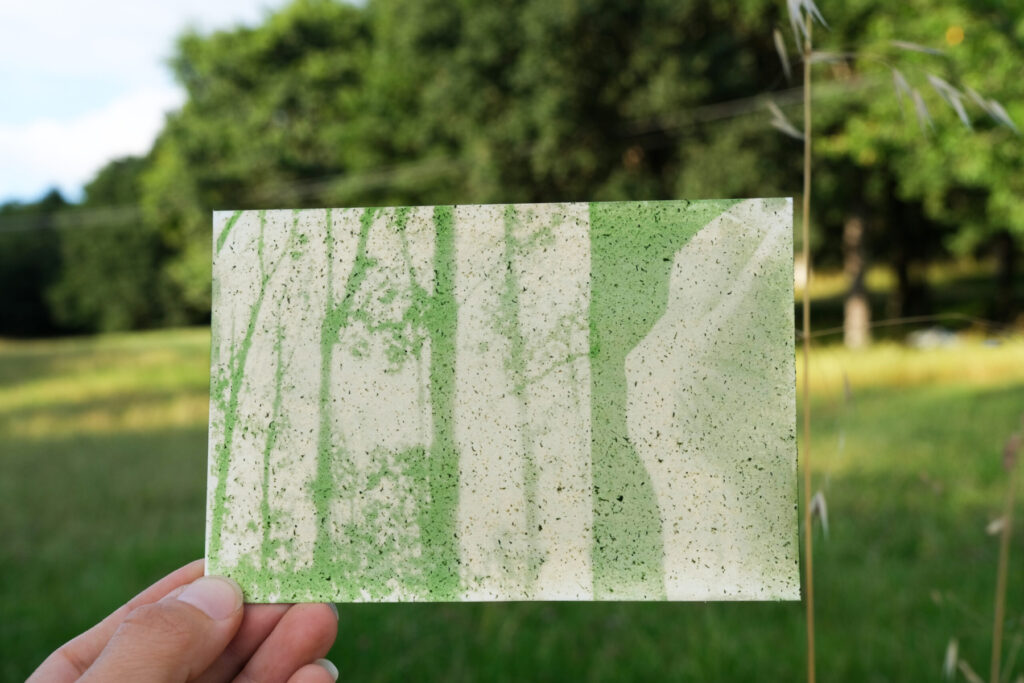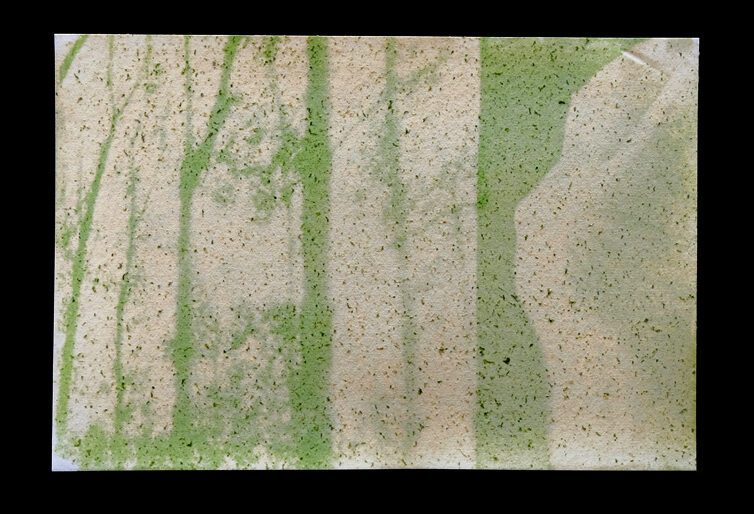1. Antotipia de remolacha (beetroot anthotype)
Esta antotipia aparece en el libro Anthotype Emulsions, Volume 2 de Malin Fabbri, y también en la base de datos del sitio web Alternative Photography (lo puedes ver aquí).
This anthotype is featured on the book Anthotype Emulsions, Volume 2 by Malin Fabbri, and also on the database of Alternative Photography website (see it here)!


Find this anthotype on page 31
*Explicación en inglés:
This anthotype was created with beetroot diluted with water and exposed to the sun for about 36h. The final composition preserves part of the digital negative I used – a picture of the Sensō-ji temple (Tokyo, Japan, February 2023) – and a harvested flower.

Artistic intention: I chose beetroot as it gives pink/fuchsia results to evoke the Japanese sakura (cherry blossom). The original intention was to add flowers from the cherry tree, but as they have not been preserved properly, I added a flower with violet tones from my region in Spain. I decided to keep some of the photographic transparency in order to preserve details of the photograph that are lost in the anthotyping process, and also to produce the effect of an X-ray of the temple.
This work also seeks to recover and preserve the technique of anthotype (invented in the XIX century), nowadays very much in disuse, and to give it a contemporary look through interventions after the results obtained from exposure to the sunlight.
I am particularly interested in this technique because it’s environmentally friendly and involves the search for a suitable natural pigment. I am looking at the differences involved in creating pigments for photography (highly sensitive to the sun) and painting (stable pigments), in order to address the limits and confluences of these two fields.
You will find more information on alternative and sustainable techniques in photography in this article from the blog.
The cherry-blossoms having fallen,
The temple belongs
To the branches…
Hana chirite
Haiku by Yosa Buson, translated by R. H. Blyth
Konomano tera to
Narinikeri
2. Antotipia de espinacas (spinach anthotype)
*Explicación en inglés:
This anthotype has been created with spinach. For the dilution I used alcohol (vodka) and it was exposed to sunlight for about 10 hours. I decided not to filter it so that some organic matter from the spinach would remain on the paper, as I think it enriches the result and differentiates it from watercolour painting.

In this photograph we can see behind the picture the field in which it was exposed to the light. This work has a lot to do with the natural environment, not only because it is a sustainable and responsible process, using an organic element instead of chemicals, but also because of its artistic intention.
The green colour of the spinach is related to the image reproduced (a forest landscape and a silhouette of a woman in it), as it seeks to represent the woman’s connection with nature and her belonging to the natural world. The green of the monochrome photograph blends in with the green of the surroundings.
This work seeks to recover and preserve the technique of anthotype (XIX century), nowadays very much in disuse, and to give it a contemporary look. I am particularly interested in this technique because it is environmentally friendly.
You can learn more about sustainable photography on this article from the blog.

